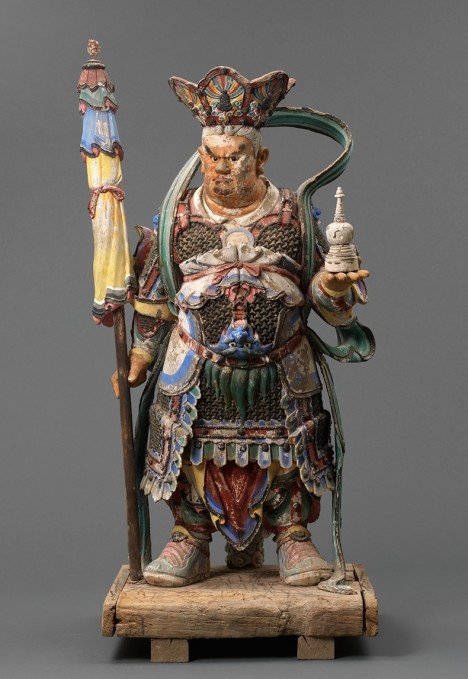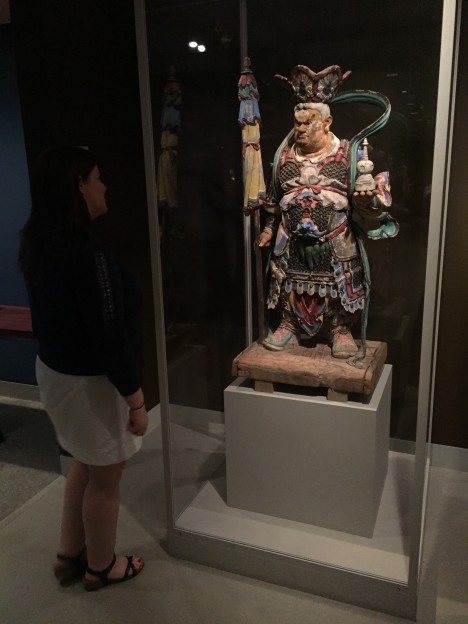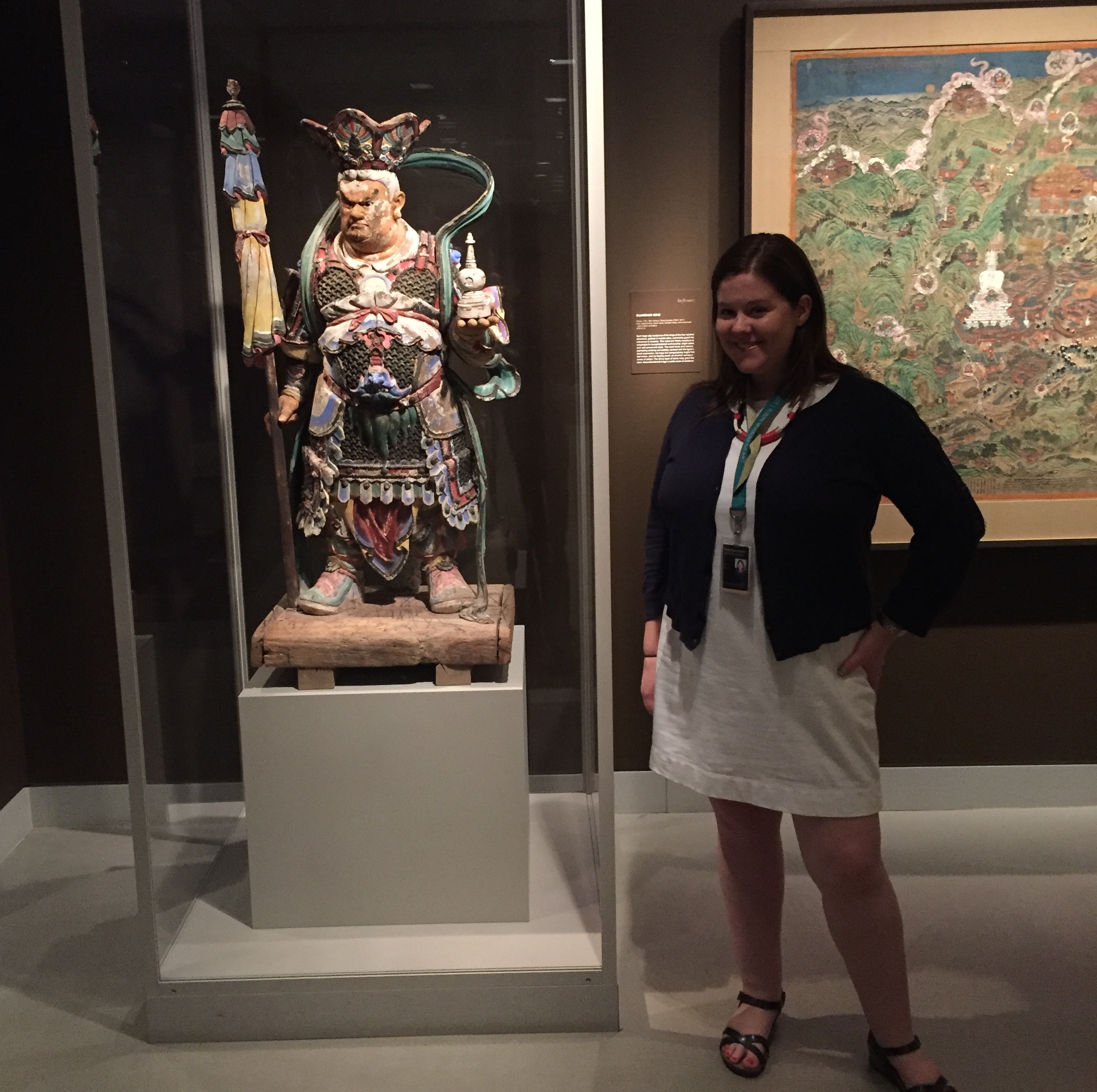
Every month, a Rubin Museum staff member shares their favorite art object from the Museum collection with blog readers. This month, Ansley Davenport, the Rubin Museum’s Membership Manager, tells us how a special sculpture from our Masterworks of Himalayan Art exhibition caught her eye and stands out among the thousands of objects in the Museum’s collection.
What sort of work do you do at the Rubin?
I oversee our program of 4,000 member households here at the Museum, ensuring that members get their benefits and receive excellent customer service. All the administration that goes into running a membership program falls under my department, including putting together a full calendar of member events—we host about one each month, from tea to exhibition tours.
Which art object did you select?
Virupaksha, Guardian King of the West

Why did you select Virupaksha?
This object caught my eye when I first starting working at the Rubin, mostly because of his size, colors, and how unique he is!
Last year, we hosted a special behind-the-scenes art object conservation event for our Friend-level members and above. Our Head of Collections Management and Registration, Michelle Bennett Simorella, spoke on the complex process that went into displaying the Guardian King. I learned what materials he was made of (clay), what challenges Michelle’s team faced to preserve the statue while on it’s on view, and even saw photos of Virupaksha getting and x-ray taken when Michelle wanted a closer look at what kept him intact for hundreds of years.
We also learned about the give-and-take that was involved in preserving his face. Conservators must balance how to restore a facial expression without taking away from the aged look of the object. A little paint can help humanize a face, but too much becomes heavy-handed.

Getting to have this behind-the-scenes experience was something that was very special to our members as well as myself. It is amazing that he is still around after 300 years and made of clay but still standing proud!
Become a Rubin Museum member and attend future behind-the-scenes events at the Museum.

